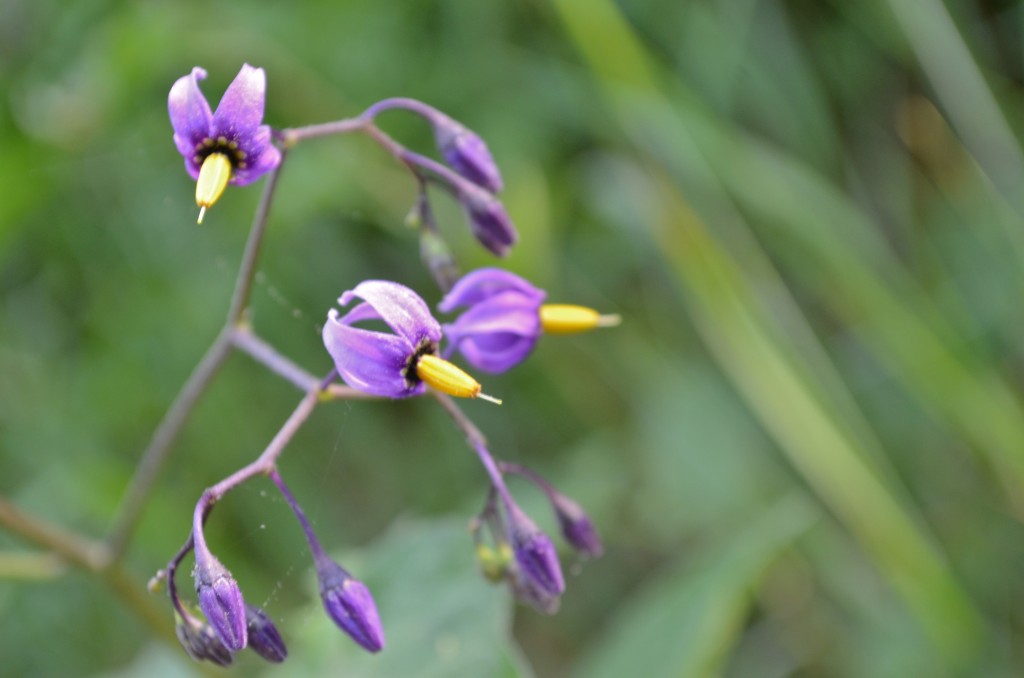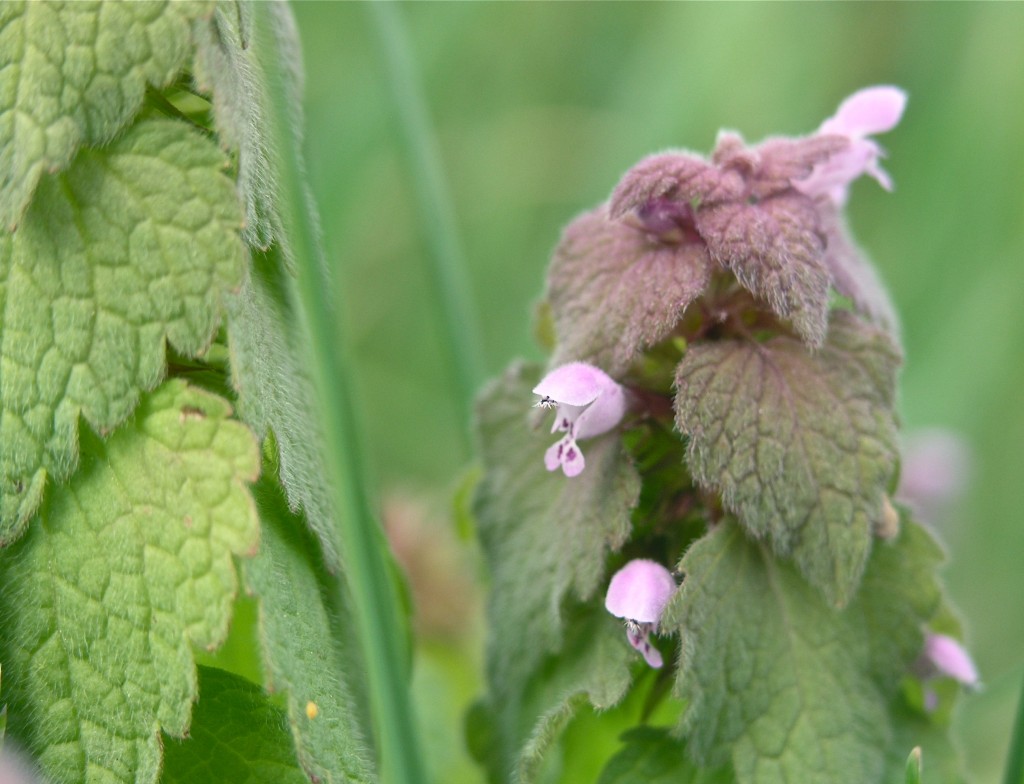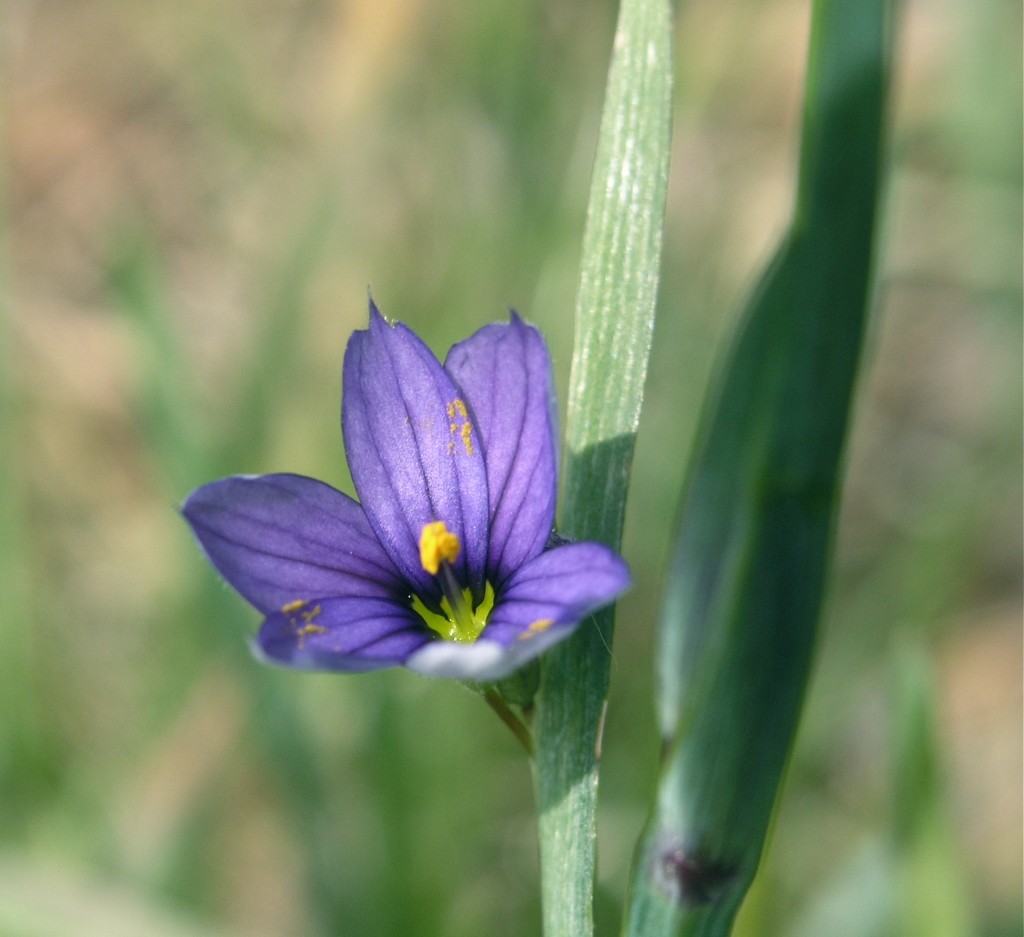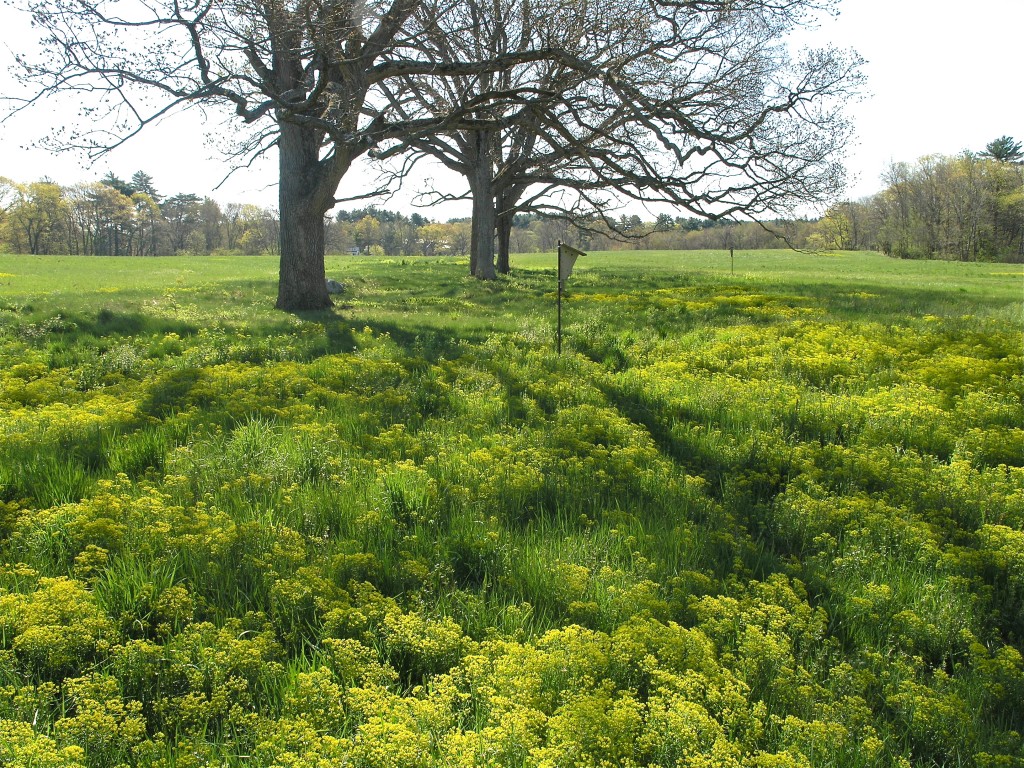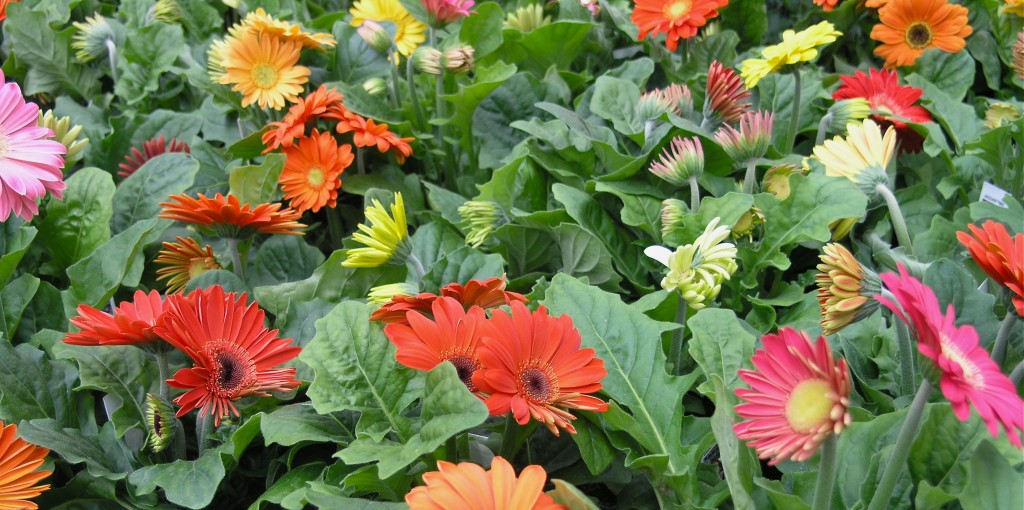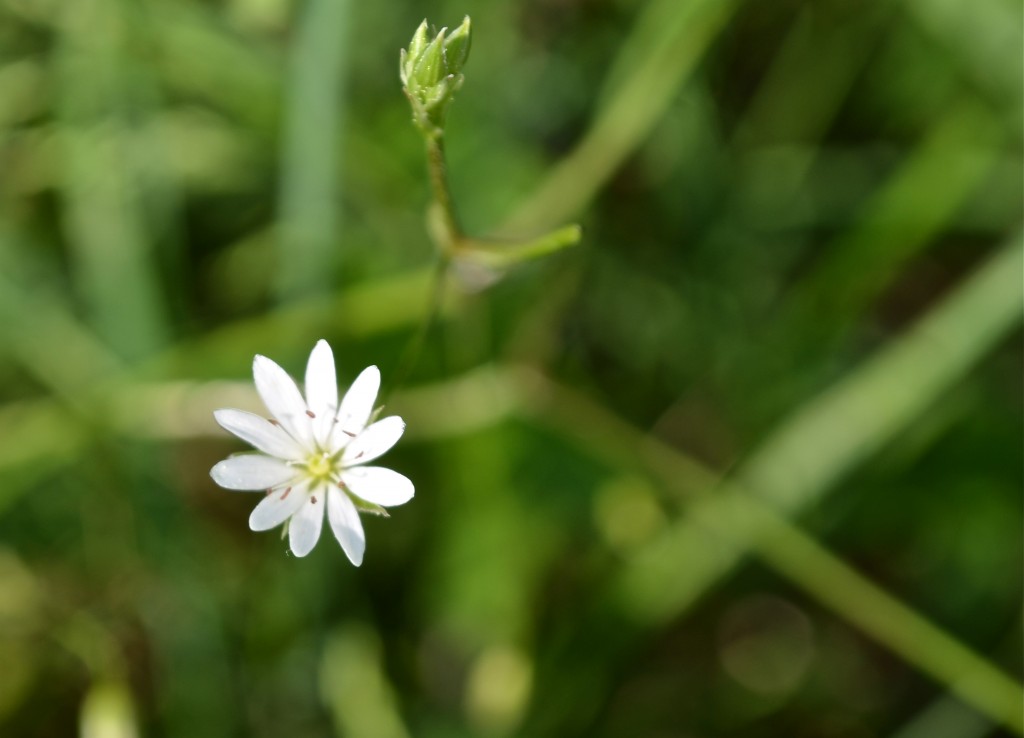 I think this is Star Chickweed. The blossom is about a half inch wide.
I think this is Star Chickweed. The blossom is about a half inch wide.
Category Archives: Charles River Peninsula, Needham MA
Yarrow
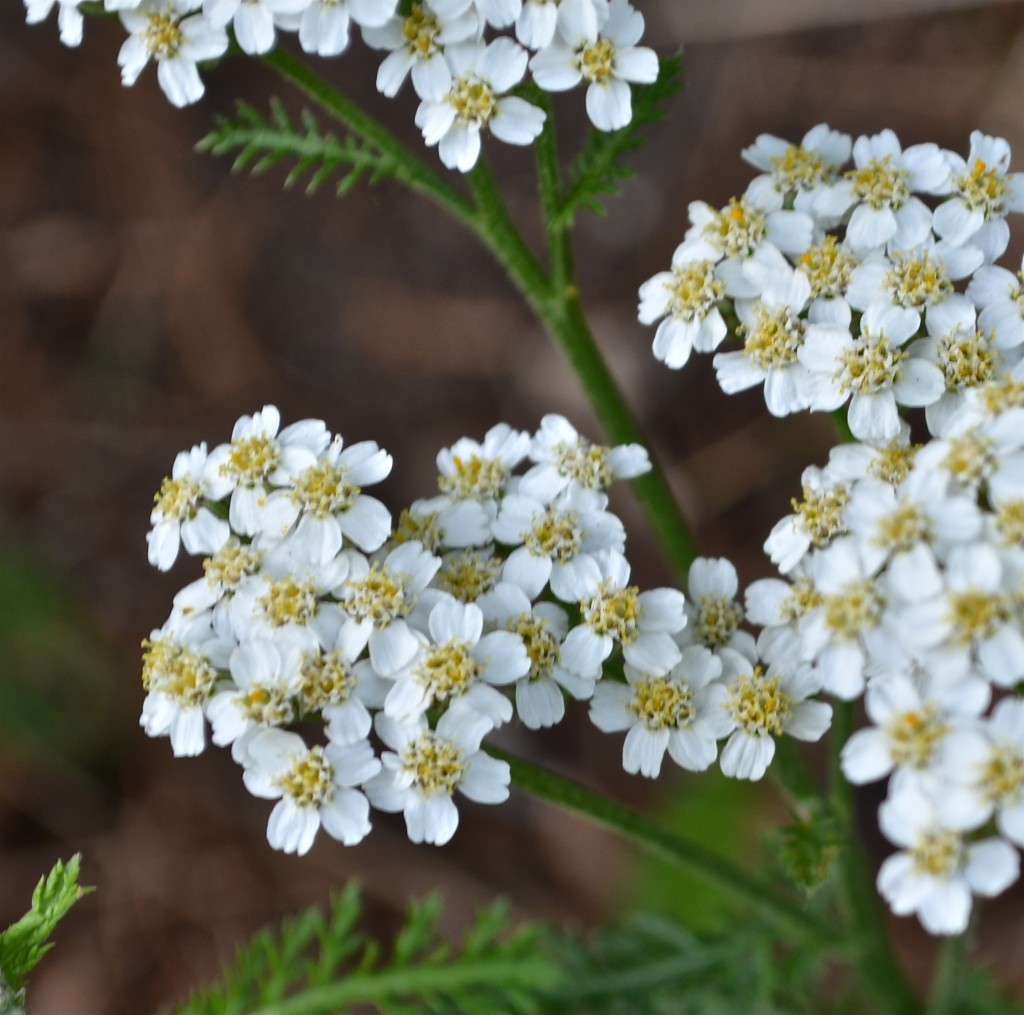 Yarrow is a medicinal herb. Used to treat cramping muscles, reducing fever or “help with relaxing.” “In antiquity, yarrow was known as herbal militaris,” for its use staunching bleeding from wounds. It is an astringent. Note the feathery leaves. Has a strong sweet scent. Family Asteraceae, native to North America.
Yarrow is a medicinal herb. Used to treat cramping muscles, reducing fever or “help with relaxing.” “In antiquity, yarrow was known as herbal militaris,” for its use staunching bleeding from wounds. It is an astringent. Note the feathery leaves. Has a strong sweet scent. Family Asteraceae, native to North America.
Yarrow, Nosebleed plant, devil’s nettle, soldier’s woundwort (Achillea millefolium)
Bittersweet Nightshade
Has a berry that changes from green to yellow to orange to red when fully ripe. The berry is poison to humans and livestock, but edible for birds! The foliage is also poisonous to humans. When I was a little kid, this was growing in the backyard where I played. It must have been dramatically impressed on me that it was DEADLY POISON, because I’ve always had a sense of respect for its power, a viper in the domestic landscape. In the potato genus Solanum. Invasive, native to Europe and Asia.
Bittersweet Nightshade, Felonwood, Poisonberry (Solanum dulcamara)
Jack-in-the-Pulpit 2
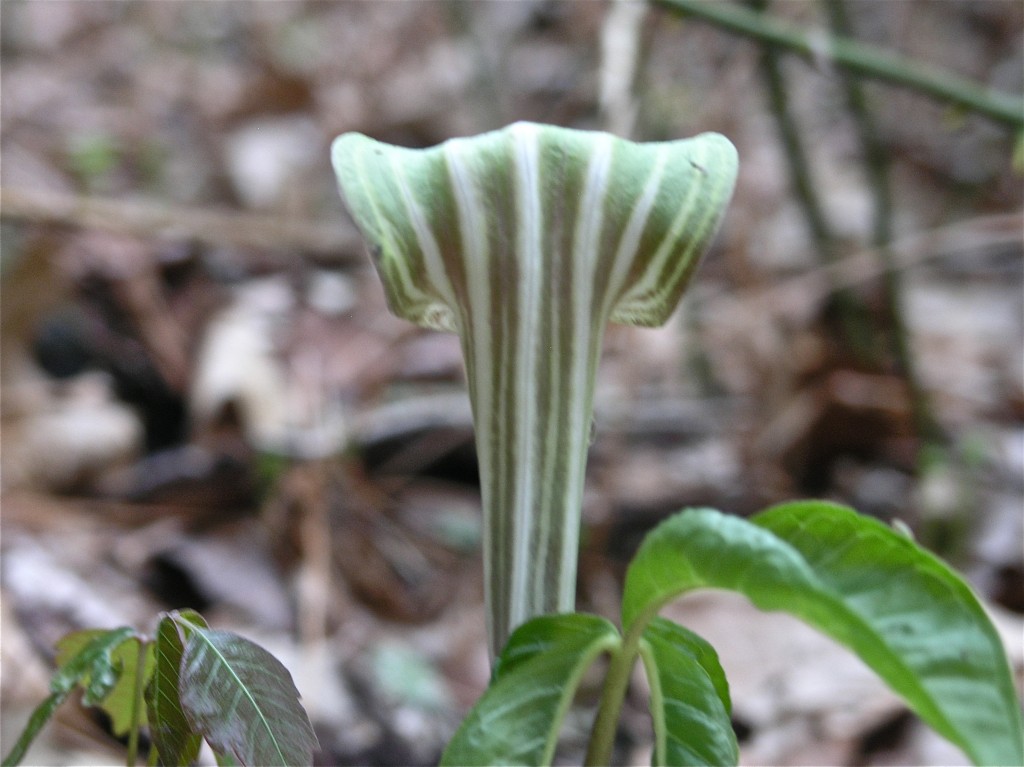
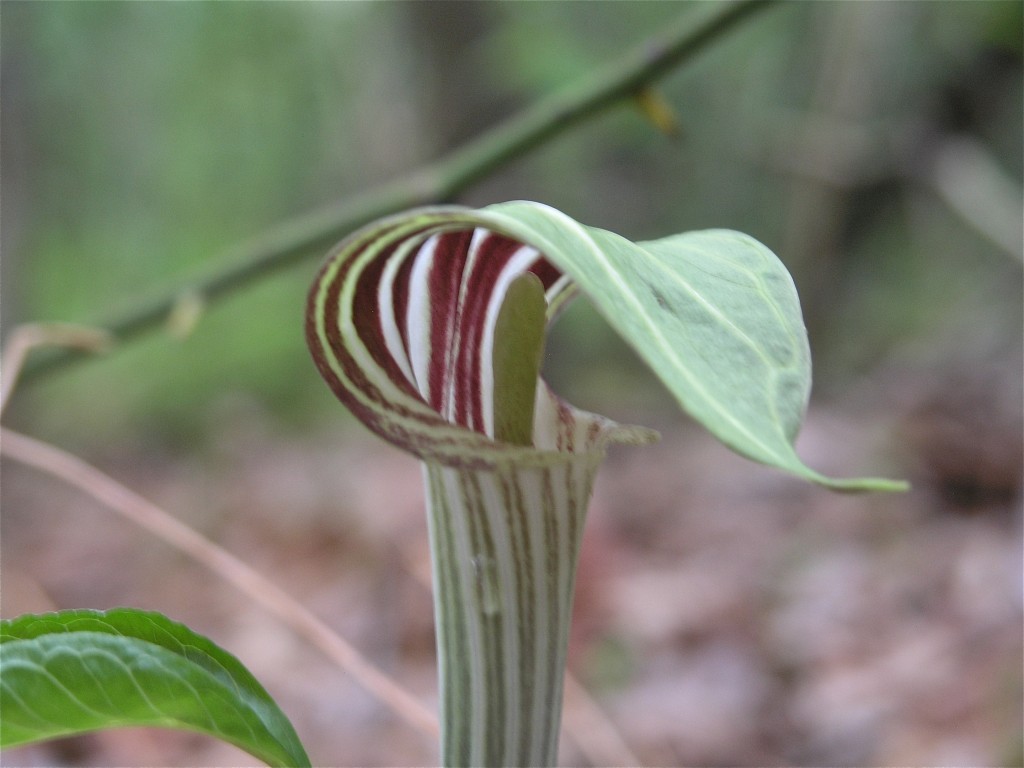 Today I found their secret Red Wing Bay lair. Had to take a couple more photos because they are so photogenic. Arum family. Separate male and female plants, females ones larger, pollinated by flies.
Today I found their secret Red Wing Bay lair. Had to take a couple more photos because they are so photogenic. Arum family. Separate male and female plants, females ones larger, pollinated by flies.
The air was full of birdsongs — I was thinking, if the bird walk man were there he would be reading them like a story, but to me… it was like looking at a page of a foreign language that I don’t speak… beautiful but I couldn’t read it. Also when we came out of the woods onto the grassy trail, we scared a big wild turkey who had been ambling along at his leisure.
Thyme-leaved Speedwell
Purple Deadnettle
Also called Purple Archangel. Native to Europe and Asia. It is often found near Henbit Deadnettle (see earlier post) and they look a lot alike. “Though superficially similar to a NETTLE in appearance, it is not related and does not STING, hence the name “deadnettle.” Hm. Young plants have edible tops and leaves!
Purple Deadnettle (Lamium purpureum)
Common Blue-eyed Grass
Tartarian Honeysuckle
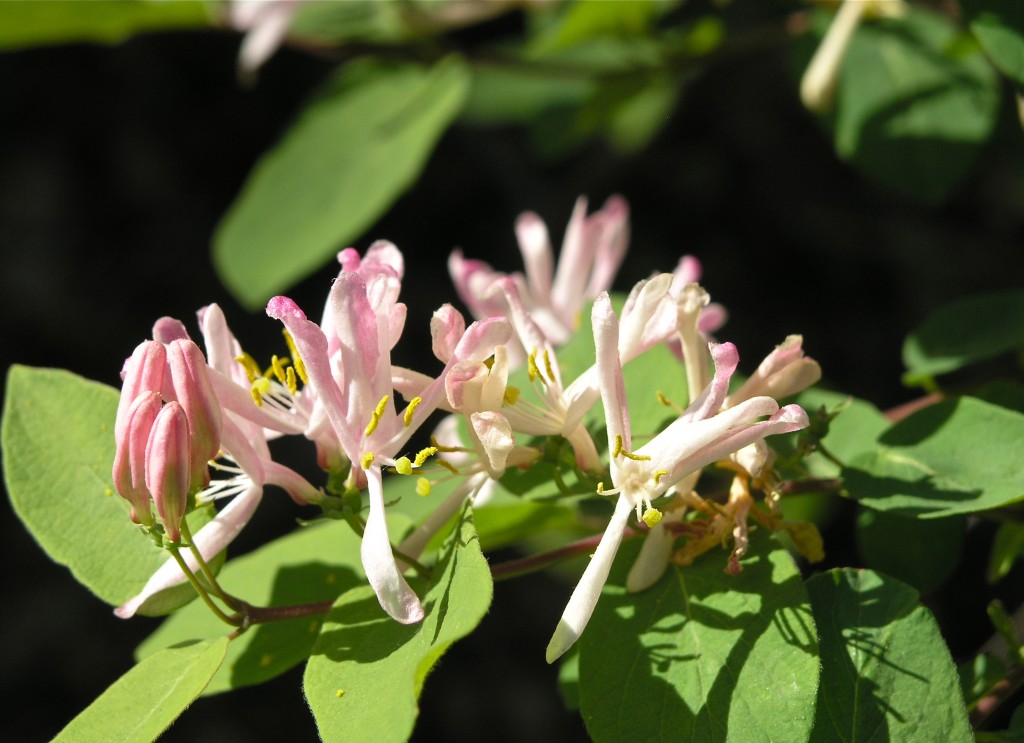 This looks a lot like the Morrow Honeysuckle, but it’s pink, found on Fisher Street in Needham. It’s an exotic invasive bush honeysuckle. Evidently all native honeysuckle species are vines. This variety was introduced to North America as an ornamental in 1752. (I wonder what the story is there.)
This looks a lot like the Morrow Honeysuckle, but it’s pink, found on Fisher Street in Needham. It’s an exotic invasive bush honeysuckle. Evidently all native honeysuckle species are vines. This variety was introduced to North America as an ornamental in 1752. (I wonder what the story is there.)
Tartarian Honeysuckle (Lonicera tatarica)
Bluebird egg
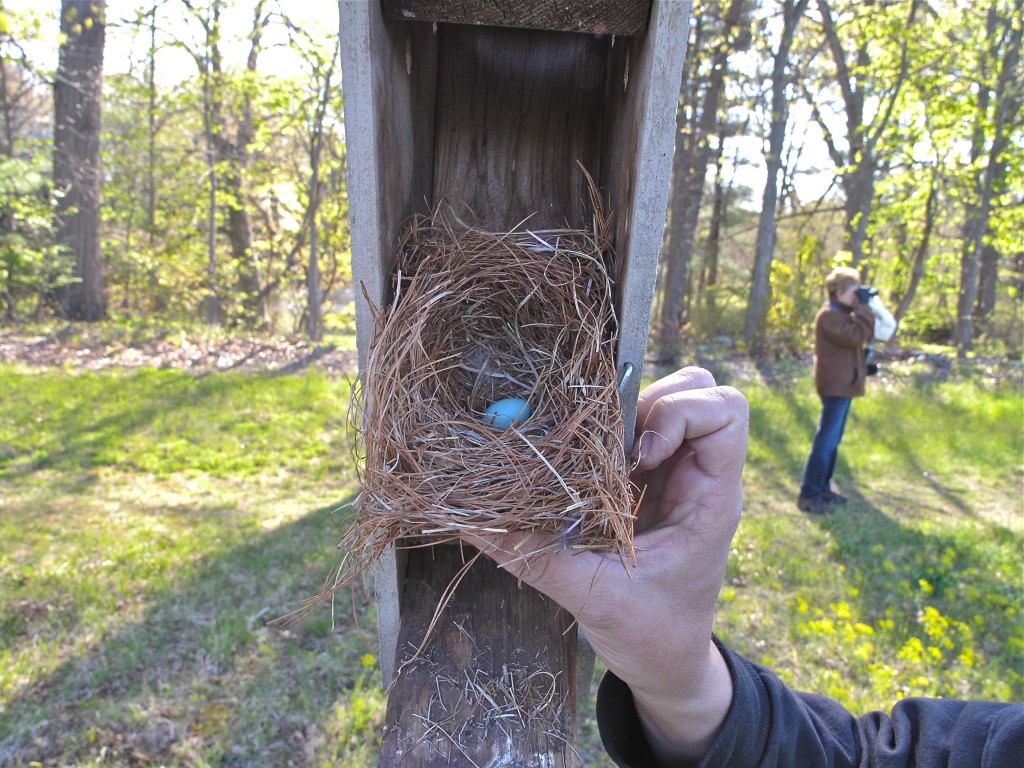 This morning we went on a novice birding hike at Redwing Bay. The leader, Peter Oehlkers, is also the Trustees’ birdhouse monitor, so he could let us have a look at a nest, and it had an egg! It was very interesting hearing my familiar stomping grounds through new ears, listening to the bird calls. Beautiful morning! Bonus picture:
This morning we went on a novice birding hike at Redwing Bay. The leader, Peter Oehlkers, is also the Trustees’ birdhouse monitor, so he could let us have a look at a nest, and it had an egg! It was very interesting hearing my familiar stomping grounds through new ears, listening to the bird calls. Beautiful morning! Bonus picture:
Common Buttercup
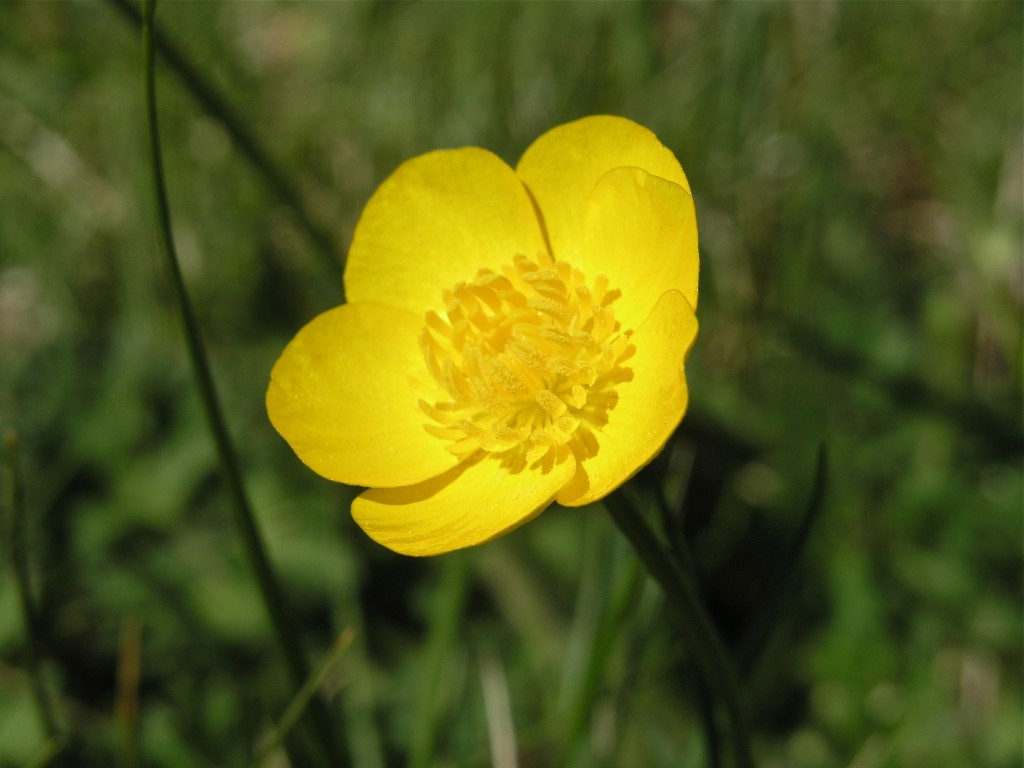
This is from the Ranunculacea family, which means “little frog.” (Meaning they like wetlands.) Introduced from Europe.
Common Buttercup (Ranunculus acris)
Bonus picture: I went to Volante Farms today, and after all this searching for tiny hidden flowers, the bounty of giant blossoms seemed almost fake…

